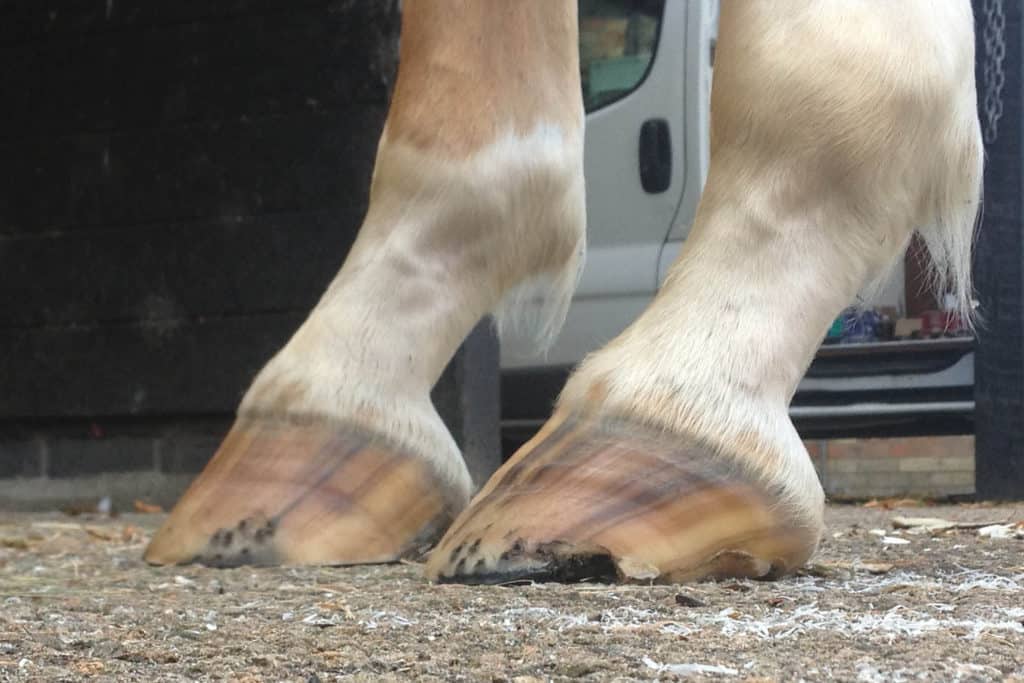
Diagnosing Foot Lameness in Horses: Take a Systematic Approach
A systematic approach to examining the equine foot can help veterinarians identify causes of lameness more quickly and accurately.

A systematic approach to examining the equine foot can help veterinarians identify causes of lameness more quickly and accurately.

Researchers recently identified a link between hind-limb lameness and coffin bone angles, which they said has not been previously described in horses.

Researchers found that hoof balance changes rapidly during the first few weeks of a foal’s life.

Having a winter hoof care plan in place ahead of time can help eliminate worries during the deep freeze.

Texas-based farrier David Gilliam hopes his new nonprofit, Equine Soundness Professionals, will help improve horse health by promoting increased collaboration between farriers and veterinarians.

Hoof capsule distortions associated with hoof imbalance typically aren’t severe, they can affect horses’ comfort and be challenging for owners and their farriers to manage.

Given the link between the external shape of the hoof capsule and its internal function, trimming and shoeing should optimize functionality and ultimately reduce stress, both to prevent injury and to treat established pathology, one veterinarian says.

Some effects of the shoeing strategies farriers use to correct low heels in horses can actually be detrimental in the long run. Here’s how one farrier recommends correcting this frustrating lameness cause.

Members of the Royal Veterinary College’s Structure and Motion groups highlight the need for further farriery research in the Equine Veterinary Journal editorial.

Dr. Debra Taylor describes the visual exam of a healthy hoof and how horses’ feet can change in response to external factors.

Instead of causing foot pain directly, rear hoof imbalances seem to cause more problems higher up the leg—to the hocks, stifles, glutes, and sacroiliac joint, one vet says.

Veterinarians could be able to use this baseline data to identify prelaminitic changes in Arabian horses.

Out of nearly 1,000 randomly chosen horses, 85% had at least one hoof disorder visible during a regular farrier visit.

Research has provided farriers with a better understanding of how weight-bearing and loading affect hoof wall growth.

The hoof is a dynamic structure that undergoes continuous changes throughout a horses’ lifetime.

Of the 1,743 respondents, 841 (48%) said their horses’ hooves are trimmed and/or shod every six to seven weeks.
Stay on top of the most recent Horse Health news with
"*" indicates required fields